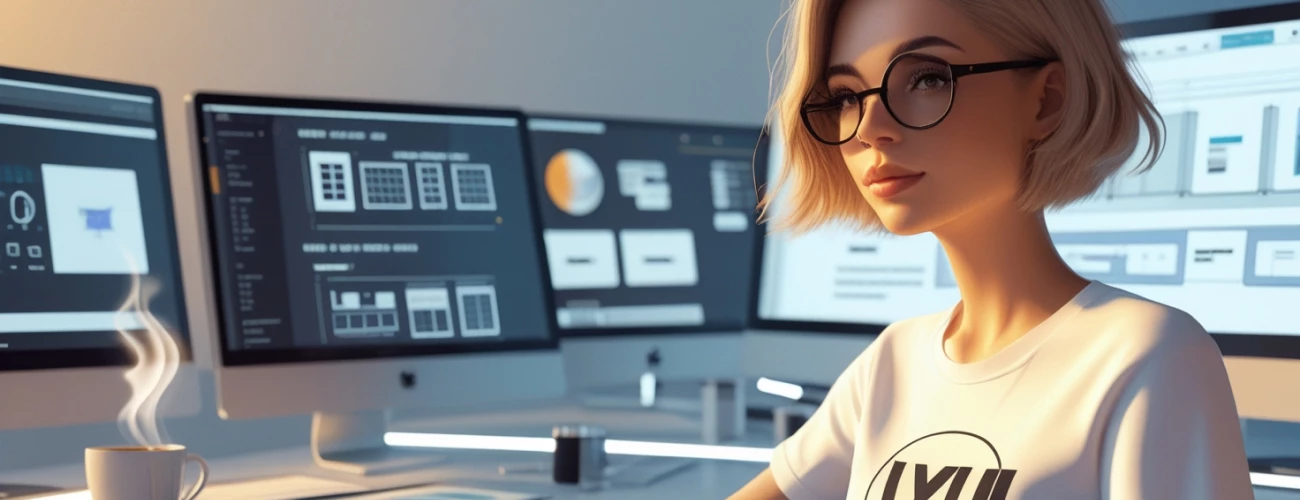Users access websites from different gadgets - PCs, laptops, smartphones, tablets, widescreen monitors. Therefore, when developing a website, it is important not to forget about adaptive design, easily adaptable to the format of different devices. In detail, what to pay attention to when working on it, we tell you in this article.
Why adaptive design is important for websites
Flexible website design is not just a trend, but a need that will not lose its relevance. There are many reasons for this:
- pages that self-adjust to users' screens are user-friendly because they simplify navigation and content perception;
- if the client likes the site, he will make the necessary action, which leads to an increase in orders and applications (increase in conversion). And vice versa, if it will be difficult for him to interact with the portal, he may refuse your services;
- search engines, and above all Google, better rank sites with adaptive layout, so the chances of getting to the top of the output are higher;
- it is easier and cheaper to create one site with a flexible interface than several separate versions. Especially since devices with different formats appear every year;
- users want to conveniently work with the portal on any gadgets, and adaptive site design helps to meet their expectations.
A site whose interface independently adjusts to the device is not just a concern for the convenience of customers, but also an important tool for a successful online business.
Tools for working on adaptive interfaces
A design that changes with the device in mind works on the basis of using rubber layouts, adaptive images, CSS media queries and some other tools.

Adaptive images
In order for the page to display correctly, you need to work with images. To do this, designers use different techniques, among them:
- Max-width: 100% - CSS property that limits the maximum width of an element;
- srcset attribute in HTML - makes it possible to load different variants of the image, taking into account the screen resolution or the width of the viewport (visible part of the page). This method allows the browser to select the most appropriate size;
- WebP, AVIF and other formats that reduce file weight.
This adaptation greatly improves usability as well as speeds up page loading.
Rubber layout
This is a technique aimed at making the content of a web page stretch to fit the size of the browser window. Для этого параметры всех компонентов указывают не в пикселях, а в процентах от величины экрана, что позволяет интерфейсу пропорционально масштабироваться.
Embedding blocks
To structure information on a web page and create a responsive design, you need to place HTML elements inside other containers using
,
, , etc. tags. Thanks to this, the size of the blocks and their position change based on the screen parameters.CSS media queries
When creating a responsive website, don't forget about media queries - a CSS function that allows you to change styles (colors, fonts, indents, width, height of elements), taking into account the device screen. This makes it possible to create pages that easily adapt to different devices.
Identifying devices and their capabilities
CSS and JavaScript media queries analyze the characteristics of the gadget - width, height, screen resolution, which are determined at the moment of page loading. These conditions are described in CSS and allow you to apply styles depending on which device parameters meet the specified criteria.
Special plugin
Dedicated plugins help to optimize site design for mobile devices, manage media queries or modify markup taking into account screen characteristics, for example:
- FitVids.js helps embed videos that adapt to device parameters;
- Responsive Menu creates adaptive menus for different gadgets.
Such plugins are convenient because they simplify the development of adaptive website designs without the need to write complex CSS codes manually.
Ready-made template with adaptive design
When working with responsive design, it is convenient to use ready-made templates. For example, the Bootstrap framework offers an adaptive grid and tools that ensure the correct display of the resource on different screens.
Individual development of adaptive design
If you want to get a modern website that users will like and will be correctly displayed on different devices, order individual development of an adaptive website. The price of this option is more expensive than layout according to templates, but it gives a lot of advantages:
- unique adaptive website design, as the resource is developed with the specifics of the company and the needs of users;
- high loading speed, if the developer is experienced and excludes elements that slow it down;
- flexible customization, as the interface adapts to any screen and user scenarios;
- SEO-optimization, because the correct structure, fast loading and the use of other techniques improve the position of the site at the issuance of search engines;
- high conversion rate, because users like the user-friendly and clear interface, and they willingly interact with it.
IT-company MEGASITE has been creating websites in Ukraine for more than 10 years, taking into account adaptability, high speed and convenience for users. We offer development of unique design, SEO-promotion, integration with necessary services and full technical support. The website you order from us will work flawlessly on any device!
Let's discuss
Your project




